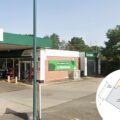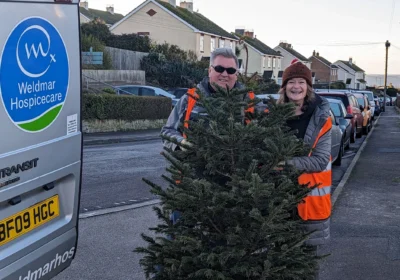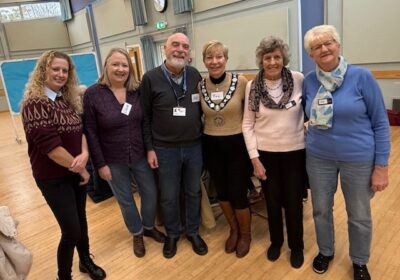PEOPLE of a certain age, while standing on a station platform waiting for a train, may well cast their minds back to a different time.
Now, thanks to the new Great Western Approaches Revisited initiative, those in the West Country can do exactly that, using the latest technology to step back into the history of the railway and the communities it serves.
QR codes – which can be scanned using a smartphone – have been posted on station platforms across Somerset, Wiltshire and Dorset which will take people to a revisited series of films telling the story of rail journeys of yesteryear.
The codes can be used to view an archive film project by the Windrose Rural Media Trust.
Revamped films have been created – inspired by an old film called Great Western Approaches, made in 1936 and still available, which took viewers on a journey to the sun.

The codes can be scanned on station platforms across Somerset, Wiltshire and Dorset. Picture: GWR
Windrose director, Trevor Bailey, said: “Long ago, the Great Western Railway saw the potential of film to promote its trains and the places they served.
“It has an extraordinary heritage and the modern GWR is proud to link past glories with today’s progress.”
Windrose has used footage from 1909 to the 1990s to craft short films relevant to 24 stations across seven routes.
They are:
• Westbury to Salisbury
• Westbury to Weymouth
• Westbury to Bath
• Westbury to Swindon
• Westbury to Bedwyn
• Westbury to Taunton
• Taunton to Bristol
Each film explores life as it used to be, allowing customers to travel into the past.
Windrose Rural Media Trust is a Dorset-based charity which uses the media – television, radio and the internet – to portray the past of rural communities in the south west and to give them a voice in the present day.
Mr Bailey added: “We have a massive film archive of life in Somerset, Dorset and Wiltshire, which has largely been digitised, and we’ve drawn on this to provide providing a companion for people on their train journeys – a window into the past of the places served by stations on seven GWR routes.
“By scanning a QR code, viewers can select the route and station of their choice and find themselves in the past life of that community. It may be a livestock market in the 1930s, daily street scenes in the 1910s, a long-closed railway line, seaside holidays in the 1950s and much, much more.
“These moving images are the nearest thing to living history that exists.”
The Great Western Approaches Revisited project was unveiled at Westbury station and has been made possible by a grant from GWR’s Customer and Community Improvement Fund.
The fund is designed to support small and medium rail-related projects that can be completed over the course of the financial year.
GWR business assurance and strategy director, Joe Graham, said: “The Customer and Community Improvement Fund is a fantastic opportunity for us to invest in projects that really make a difference to our customers and communities at a local level.
“We’re delighted to support this exciting series of films, helping to inspire travel across routes we serve. I’d like to congratulate all those involved for bringing it to fruition.”











Leave a Reply